We make a sofa in the kitchen with our own hands
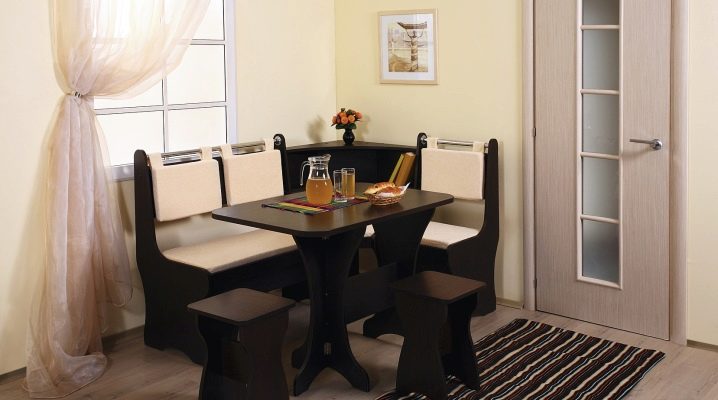
The kitchen sofa is a practical and comfortable solution. Kitchens in Soviet-style apartments are not very spacious. And a small sofa with storage boxes simultaneously solves two problems: you can comfortably sit on it for breakfast, lunch or dinner, and you can put kitchen utensils or food supplies in the boxes. Our article is devoted to the intricacies of self-manufacturing a sofa for the kitchen.
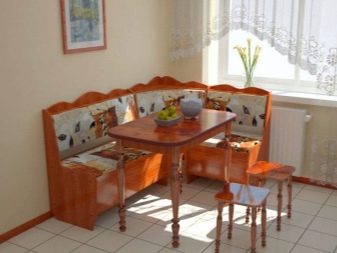
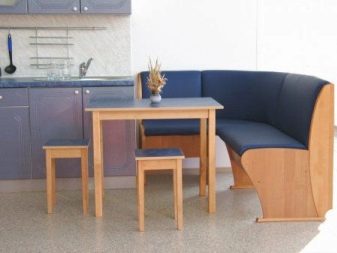
Peculiarities
Modern layouts provide for kitchens of a fairly large area, but here, too, the sofa will successfully fit into the interior. This can be a sofa with storage space for kitchen utensils or a full sofa with an extra bed. The assortment of furniture stores includes sofas for every taste and in different price categories.
But, despite this, it is not always possible to choose something that will harmoniously fit into the interior of the kitchen, suit it in terms of quality and price. A way out in this situation can be a do-it-yourself sofa. With your own hand, you can make exactly what is ideal for the existing design.


This task seems difficult only at first glance. No special equipment is required for the manufacture of this type of furniture. By following the instructions, you can easily deal with this matter.
A do-it-yourself sofa for the kitchen will allow:
- save your budget;
- pick up quality materials;
- select the best functionality that meets your needs.
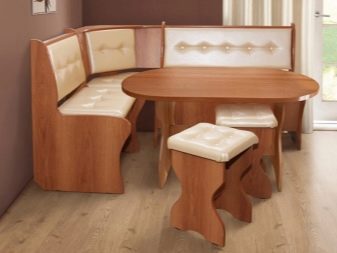
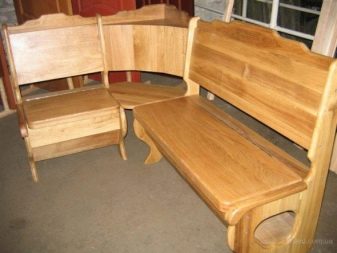
Preparatory stage
First you need to think over the design and functionality of the future sofa. If you didn't have to make furniture yourself from scratch before, you shouldn't immediately come up with a complex structure with many elements. We give preference to the standard and convenient model.
An ordinary sofa necessarily has a frame or frame - this is its skeleton, which gives shape and rigidity. As a support, you can make legs or a roller mechanism; there is a great choice in furniture accessories stores. If additional storage space is needed, we plan folding seats, and under them - boxes. We also decide for ourselves how soft or hard the sofa should be.
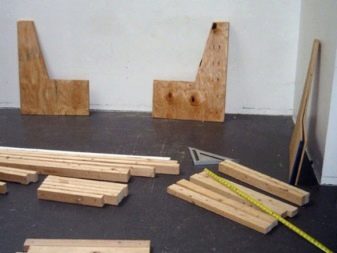
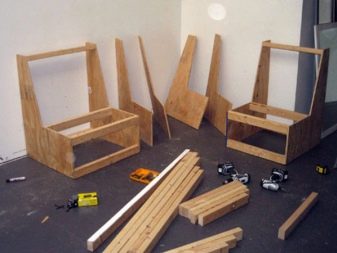
It is important at the planning stage to determine the size so as not to overload the space. And decide which shape of the sofa is suitable taking into account the location and dimensions of the kitchen: straight or angular.
The straight version is a classic, suitable for small spaces and has a simpler design. The corner model offers a large number of seating areas and allows efficient use of space.
The direct purpose of the kitchen sofa is a seating area. To use the space more fully, especially when it is in short supply, we will add additional options to the furniture:
- storage niches under folding seats or drawers;
- sleeping place for guests in case you make a folding sofa (this is a more complex mechanism);
- additional shelves or worktop in the corner section: here you can place recipe magazines, appliances or flowers.
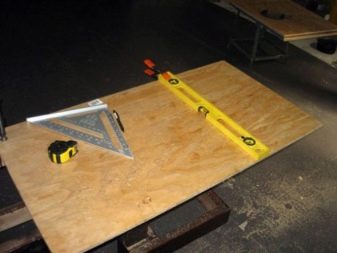
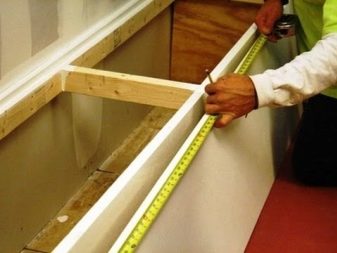
Materials used
The kitchen makes special demands on the quality of the furniture. There is both high humidity and splashes of fat during cooking. Therefore, you need to consciously approach the choice of materials.
Frame
There are no special requirements for the frame material.It is better, of course, to use natural wood, which will increase the service life of the product, but also significantly increase its cost. In budget options, bars and plywood are used. Decorative parts can be made of chipboard. You can choose these elements to match the color of the kitchen set for completeness of the composition.
The legs and back should be more durable, bars of 60x60 mm are suitable for them. It is better to use plywood moisture resistant, at least 12 mm thick. Corners and self-tapping screws are used to assemble the frame. The only requirement for them is increased strength, since the finished product is subjected to constant loads.
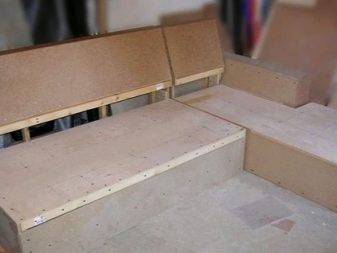
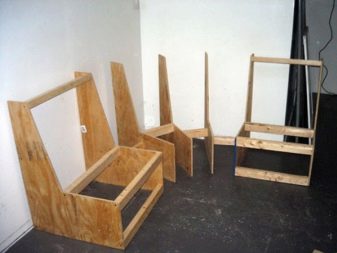
Upholstery
It is very unpleasant if, after a fish dinner, the sofa exudes a corresponding aroma for a long time, so the upholstery material should not absorb moisture and odors. Aside from smell, another enemy of the kitchen couch is fat. The upholstery material should be easy to clean and not be afraid of cleaning agents. The upholstery should be made of dense material so that it does not tear or deform during operation.
Artificial materials meet these requirements. As additional protection, a cover can be sewn on, which is always easy to remove and wash. Yes, and changing the cover is easier and cheaper than restoring a sofa and re-tightening the upholstery. Leather also meets the necessary requirements. Such a sofa looks noble and elegant, however, and it will cost more.
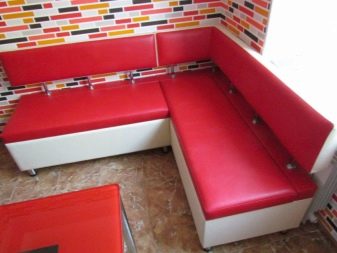
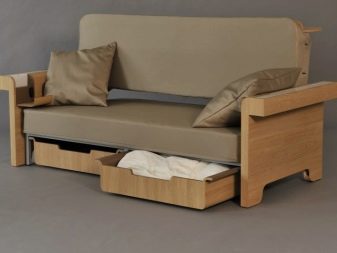
Budget upholstery options:
- cotton is a natural dense material;
- flock is a practical durable material that does not require special care, animal hair does not stick to it, holes from their claws are invisible on it;
- jacquard is a dense material, durable, does not fade in the sun;
- velor is an inexpensive beautiful fabric, but it wears out quickly, easily absorbs moisture, dirt and grease, loses its appearance from frequent cleaning;
- the artificial leather does not fade, it is good and easy to clean, it is not afraid of the sun's rays.
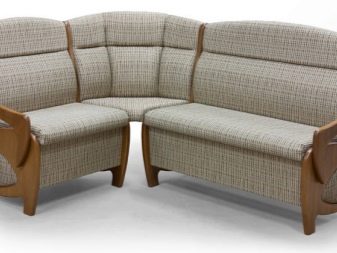
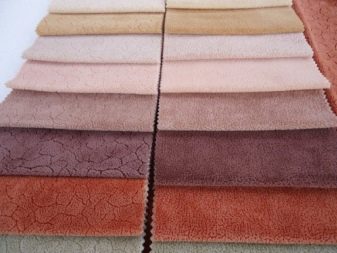
Elite materials:
- microfiber - a very durable material with Teflon impregnation, thanks to which water repels, the fabric is resistant to abrasion and dirt;
- tapestry - natural fabric, has high wear resistance;
- chenille - the threads of this material are fluffy, which creates a special texture, the fabric does not require complex care;
- genuine leather is an expensive material, but it will last a long time, does not require special care, but you cannot rub it too much, otherwise this place may become lighter.
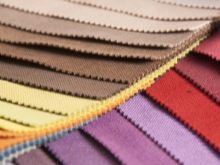
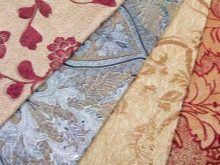
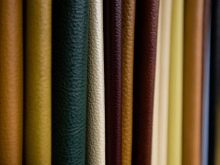
Filling
Many materials are used as filling: synthetic winterizer, foam rubber, batting, holofiber, felt. We select the thickness of the material based on the requirements for softness. A semi-rigid sofa has a filler thickness of 5 cm, respectively, if you want softer, you should do more. If the requirements for the stiffness of the sofa in the family differ, the thickness of the filler can be minimized and the pillows can be additionally sewn.

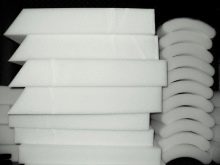
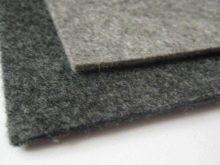
Unprotected wooden parts must be painted or varnished. You can also cover the sofa with fabric where possible. Laying the filler in layers allows you to create an orthopedic effect.
Mechanism
If you are planning a folding sofa, then you need to choose the appropriate mechanism.
- Accordion suitable for confined spaces. In this version, the seat is pushed forward and the backrest is lowered into its place.
- Book - a common mechanism, such a sofa unfolds like an open book. It is compact and easy to assemble.
- Click-gag - this mechanism is similar to the "book" option. Convenient to use in small spaces. The mechanism provides for the possibility of lifting both parts.
- Draw-out mechanism Is the simplest option. When using it, the lower part of the sofa rolls out, and the sleeping place rises from it. Such a design is quite capable of doing it yourself.
- Dolphin - the mechanism involves pulling out the lower block. One of the simplest folding options.
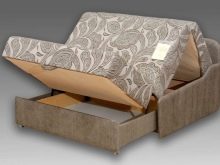
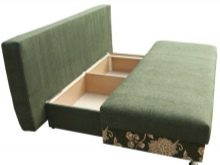
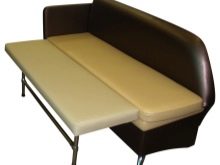
Step-by-step instruction
Consider an example of making a corner sofa for the kitchen.
Drawing construction
The design of the corner sofa has its own characteristics and in order to comply with all the nuances, it is necessary to first make measurements and build a drawing.
It is worth considering the following points:
- overall dimensions of the entire sofa and its individual sections;
- the height of the legs;
- load on structural elements: strengthen in the most loaded places (if it is supposed to store heavy objects in boxes, it is worth strengthening the bottom more reliably);
- the angle of inclination of the backrest, taking into account the thickness of the upholstery and the expected presence of cushions;
- thickness, stiffness and upholstery material;
- seat opening mechanisms, drawer extension.
The drawing can be done on paper or in drawing programs. You can use ready-made schemes that are on thematic sites: furniture or construction.
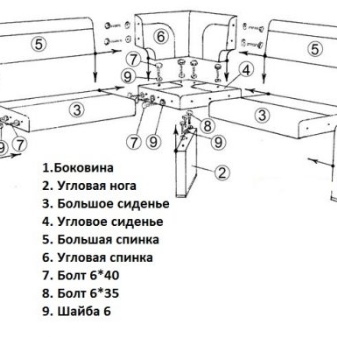

Manufacturing process
After you have decided on the dimensions of the product, upholstery and filling materials, built a drawing, you can calculate the amount of material and start working. You can cut the details yourself or resort to the help of specialists. They will do this job quickly and accurately, and will also process the edge. True, this will affect the final cost of the sofa.
For self-cutting and assembly of a wooden frame, you will need a screwdriver, a saw and a miter box. A furniture stapler is used for upholstery. First of all, you need to cut out the parts in accordance with the prepared diagram.
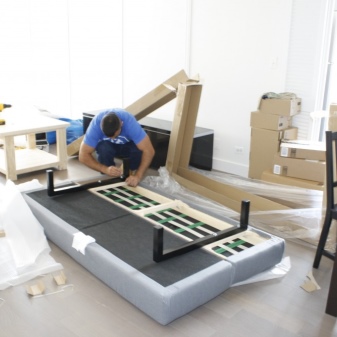

The long section consists of:
- bottom;
- seats;
- backs;
- sidewalls - 2 pcs.;
- side parts for boxes (long sides) - 2 pcs.;
- frame made of bars.
Assembly order:
- protect the ends on the sidewalls with an edge, the bottom - with heels;
- we collect the frame and the box (the lower part of the sofa);
- we attach the back, sidewalls and seat to the frame.
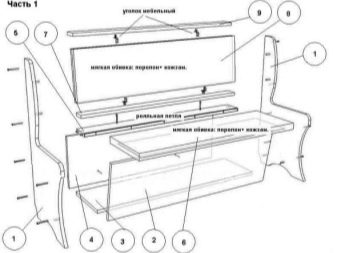

The short part of the sofa is assembled in the same way, the only difference is in size. After both straight parts of the sofa are ready, they need to be connected with a corner. We make the seats on hinges so that they open, and there is access to the drawers.

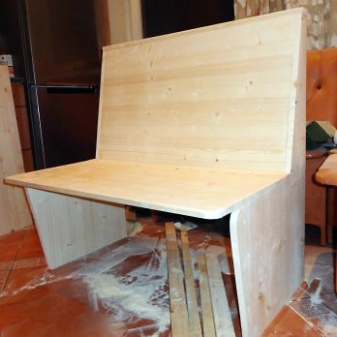
The last step is the upholstery of the sofa. It is necessary to cut the filling for the seat and backrest with a small margin of size. You can attach it to double-sided tape or glue. Helpful advice: if the foam is wrapped with padding polyester, this will increase the service life of the filler and make it even more soft.
We cut out the material for the upholstery taking into account the allowances for tucking the edges and add another 1 cm for the "splendor".
Carefully shoot the fabric with a furniture stapler. If the frame from the old sofa is well preserved, and the upholstery is worn out, you can not assemble a new sofa from scratch, but make the restoration of the old one: upholstery banner.
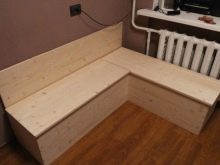
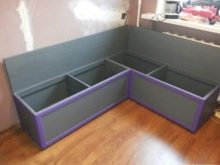

For information on how to make a sofa in the kitchen with your own hands, see the video below.













The comment was sent successfully.